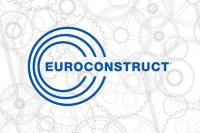European construction industry: Euroconstruct forecasts to 2019

The European construction industry is showing a small but significant recovery. According to the analyses presented at the 83rd Euroconstruct Conference held in Amsterdam on 9 June, construction output (which expanded in 2016 by 2.5%) is forecast to increase by 2.9% in 2017 and by 2.4% in 2018. Construction output is expected to grow by 8% in the three-year period 2016-2018, while a more modest result is forecast for 2019 (+2%).
The biggest increase in 2016 was in the residential construction segment, which grew by 5%. However, the forecasts point to a slowdown in expansion over the next three years, with growth of 3.7% in 2017, 2.3% in 2018 and 1.7% in 2019.
New residential construction underwent the most sustained growth (+8.8% in 2016) and is expected to continue to expand this year (+6.8%), followed by a significant slowdown in 2018-2019. Residential renovation is continuing to expand with annual growth rates of 1.5% and will be the first segment where output will reach and exceed pre-crisis levels in 2017.
The non-residential construction segment is decidedly less dynamic, with growth forecasts for the Euroconstruct region of just +2.3% in 2017, +1.8% in 2018 and +1.2% in 2019. The recovery in new construction only began in 2016, later than in other segments. After the initial growth of 2.5% in 2016 and 2.8% in 2017, the expansion will become much less dynamic (1.9% in 2018 and 1.0% in 2019). As in the residential sector, renovation is growing at an average annual rate of 1.5%.
The country that is expected to see the best performance in 2017-2019 is Hungary, where the construction sector will grow at an average annual rate of 14.9%, driven by government measures to stimulate new residential construction.
Ireland will also see an excellent performance. Following more than 10% growth per annum over the period 2014-2016, construction activity will expand by 7.7% per year on average over the next three years. Construction activity will also expand strongly in Poland (5.5% on average), the Czech Republic (4.3%) and Portugal (4.1%).
- Read the complete article published in Ceramic World Review 123/2017
Did you find this article useful?
Join the CWW community to receive the most important news from the global ceramic industry every two weeks





















